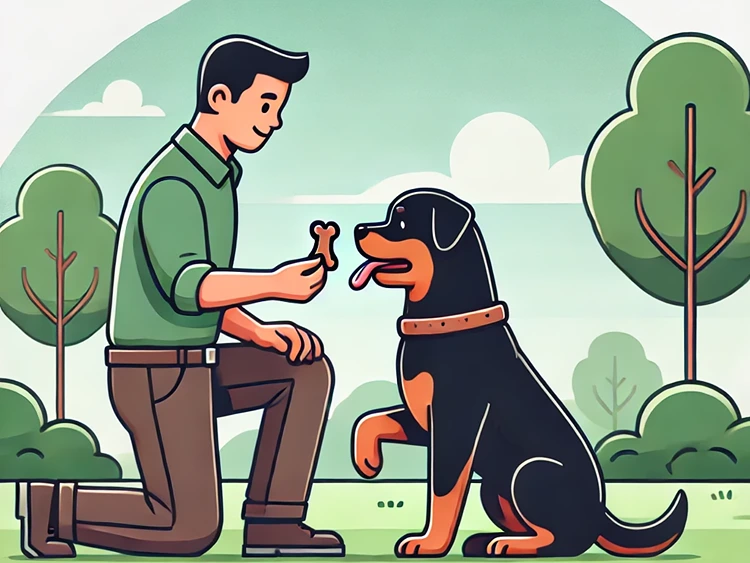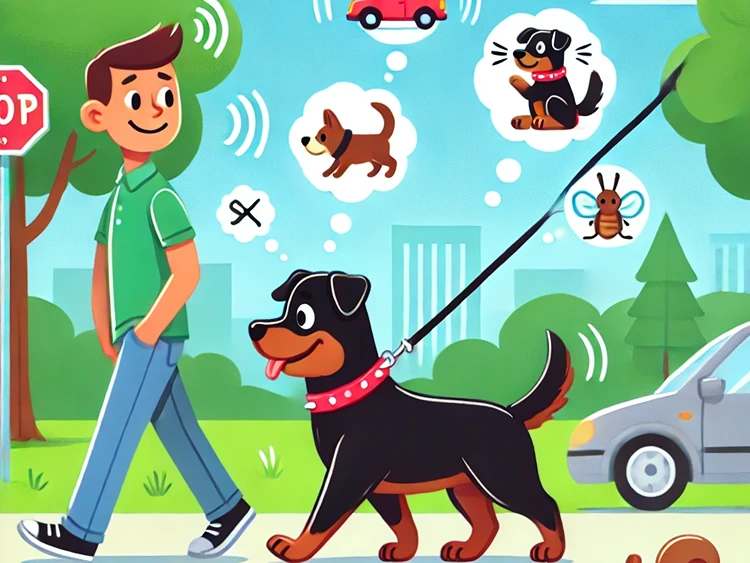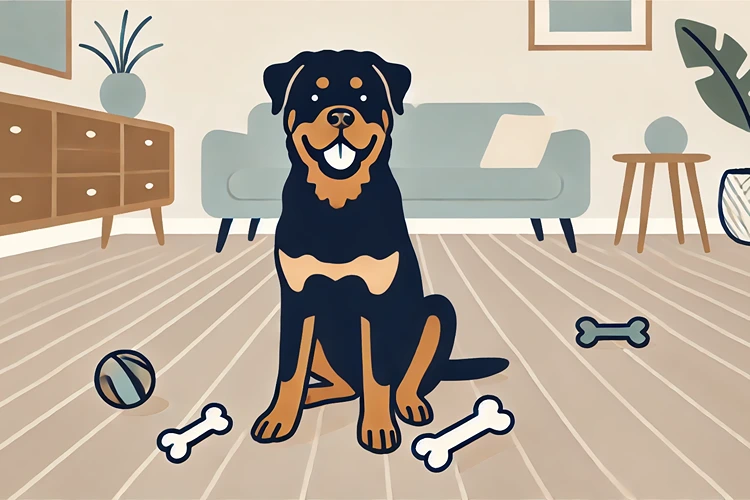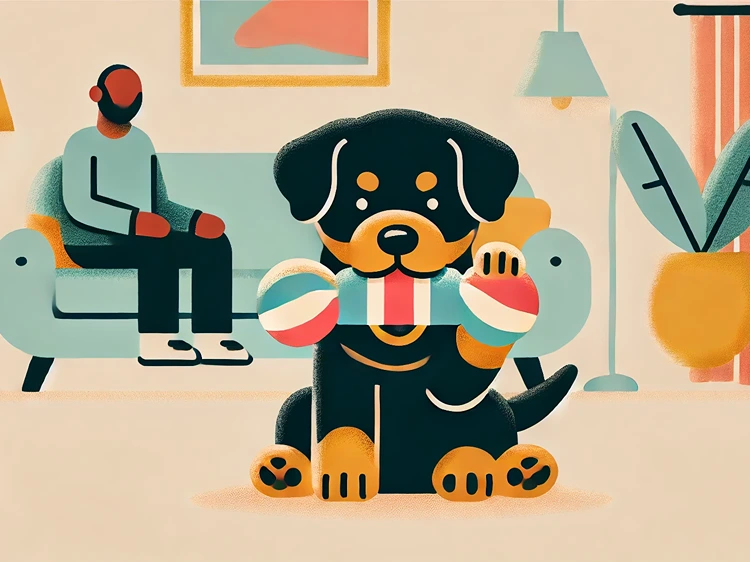Rottweilers are known for their loyalty, intelligence, and protective nature. However, when these strong traits are coupled with aggression, it can lead to challenges for even the most experienced dog owners. Understanding and addressing aggressive behavior in Rottweilers is crucial to ensuring a happy and harmonious relationship with your pet.
Aggressive behavior in Rottweilers can stem from various factors, including fear, territorial instincts, lack of socialization, or even medical issues. Identifying the root cause is the first step in implementing effective behavior modification strategies. This article will guide you through practical and proven techniques to help modify aggressive behavior in your Rottweiler, making them a more balanced and well-adjusted companion.
Why Do Rottweilers Exhibit Aggressive Behavior?
Understanding why Rottweilers might show aggression is key to addressing the issue effectively. Aggression in Rottweilers can manifest for several reasons:
- Fear and Anxiety: A Rottweiler may act aggressively out of fear. This could be a response to unfamiliar environments, people, or other animals.
- Territorial Behavior: Rottweilers are naturally protective of their home and family. This can lead to aggression when they perceive a threat to their territory.
- Lack of Socialization: Rottweilers that haven’t been properly socialized may not know how to interact with other dogs or people, leading to aggressive responses.
- Past Trauma: Rottweilers who have experienced abuse or neglect may develop aggressive tendencies as a defense mechanism.
- Medical Issues: Sometimes, aggression can be linked to pain or discomfort caused by medical conditions.
It’s essential to identify the specific triggers of aggression in your Rottweiler before implementing behavior modification strategies. This will allow you to tailor your approach to your dog’s unique needs.
Recognizing the Early Signs of Aggression in Rottweilers
Before aggression escalates to a dangerous level, there are often subtle signs that a Rottweiler is feeling threatened or uncomfortable. Being able to recognize these signs early can help you intervene before the situation worsens.
Common Warning Signs
- Growling: A low growl is often a warning that your Rottweiler is feeling threatened or uncomfortable.
- Stiff Body Posture: If your Rottweiler’s body becomes rigid, it’s a clear sign they are on high alert and may be preparing to defend themselves.
- Raised Hackles: When the hair on your Rottweiler’s back stands up, it indicates fear, excitement, or aggression.
- Bearing Teeth: Showing teeth is a direct threat and a sign that your Rottweiler is ready to defend themselves if necessary.
- Intense Stare: A hard, unblinking stare is another indication that your Rottweiler feels threatened and is ready to react.
Understanding the Context
Recognizing these signs is only half the battle; understanding the context in which they occur is equally important. For example, if your Rottweiler growls when approached by a stranger, this could indicate fear of unfamiliar people. On the other hand, if they growl when someone approaches their food bowl, it may be a sign of possessiveness.
How to Prevent Aggressive Behavior in Rottweilers
Prevention is always better than cure, and this is especially true when dealing with aggressive behavior in Rottweilers. By implementing proactive strategies, you can minimize the likelihood of aggression developing in the first place.
Early Socialization
One of the most effective ways to prevent aggression in Rottweilers is through early and consistent socialization. Exposing your dog to a variety of people, animals, and environments from a young age helps them learn how to interact appropriately.
Paw-some Tip:
Start socializing your Rottweiler puppy as soon as they have completed their vaccinations. Introduce them to different environments, sounds, people, and other animals. Positive experiences during this critical period will help your Rottweiler grow into a well-adjusted adult.
Training and Obedience
Consistent training and obedience exercises are essential in preventing aggression. A well-trained Rottweiler is less likely to exhibit aggressive behaviors because they understand their boundaries and what is expected of them.
Basic Commands
Teaching basic commands like “sit,” “stay,” and “leave it” can give you control over your Rottweiler’s behavior in potentially aggressive situations. For example, if your Rottweiler starts to show signs of aggression, commanding them to “leave it” and rewarding them when they obey can help diffuse the situation.
Positive Reinforcement
Use positive reinforcement techniques such as treats, praise, and playtime to reward good behavior. This method encourages your Rottweiler to repeat the behaviors you want to see while discouraging aggression.
Understanding Triggers and Managing Environment
Knowing what triggers your Rottweiler’s aggression can help you manage their environment to reduce these triggers. For instance, if your dog becomes aggressive around other animals, avoid situations where they might encounter other dogs until you can address the issue through controlled exposure and training.
Common Aggression Triggers and Management Strategies
| Trigger | Possible Cause | Management Strategy |
|---|---|---|
| Strangers | Fear or territorial instinct | Gradual desensitization and positive reinforcement |
| Other Dogs | Lack of socialization or past trauma | Controlled exposure and training with a professional |
| Food Aggression | Resource guarding | Teaching “leave it” command and controlled feeding routines |
| Visitors at Home | Protective behavior | Creating a safe space and supervising interactions |
| Leash Aggression | Fear or frustration | Proper leash training and focus commands |
Effective Behavior Modification Strategies for Aggressive Rottweilers
If your Rottweiler is already showing signs of aggression, it’s crucial to take steps to modify their behavior. Behavior modification involves changing how your dog perceives and reacts to certain situations.
Desensitization
Desensitization involves gradually exposing your Rottweiler to the source of their aggression in a controlled and positive way. The goal is to reduce their reactive response over time.
Step-by-Step Guide to Desensitization
- Identify the Trigger: Pinpoint what exactly causes your Rottweiler to become aggressive.
- Start Small: Begin with a very low level of exposure to the trigger. For example, if your dog is aggressive towards other dogs, start by exposing them to another dog from a distance.
- Reward Calm Behavior: Use treats and praise to reward your Rottweiler for remaining calm during exposure to the trigger.
- Gradually Increase Exposure: Slowly decrease the distance between your Rottweiler and the trigger, continuing to reward calm behavior.
This method requires patience and consistency but can be highly effective in reducing aggression over time.
Counterconditioning
Counterconditioning involves changing your Rottweiler’s emotional response to a trigger. Instead of reacting with fear or aggression, your goal is to teach your dog to associate the trigger with something positive.
Rottie Stats:
A study by the American Veterinary Society of Animal Behavior found that dogs who underwent behavior modification techniques like desensitization and counterconditioning showed a 70% reduction in aggressive behavior.
Implementing Counterconditioning
To countercondition your Rottweiler, start by identifying the trigger that causes aggression. Pair the presence of the trigger with something your dog loves, like their favorite treat or toy. Over time, your Rottweiler will begin to associate the trigger with positive experiences, reducing their aggressive response.
Pros and Cons of Behavior Modification
Pros
- Helps build a positive relationship between the owner and the Rottweiler.
- Reduces the likelihood of aggressive incidents, improving safety for everyone.
- Can lead to long-term behavioral improvements with consistent application.
- Offers a humane approach to addressing aggression through understanding and positive reinforcement.
- Provides a structured way to identify and address the root causes of aggression.
Cons
- Behavior modification requires a significant time commitment and patience.
- Some cases of aggression may be too severe to handle without professional help, which can be costly.
- There’s a risk of relapse if the strategies are not consistently maintained over time.
- Success can vary depending on the individual dog’s temperament and history.
- May require a combination of strategies, including medication, which can complicate the process.
When to Seek Professional Help for Aggressive Rottweilers
While many owners can manage their Rottweiler’s aggressive behavior through consistent training and behavior modification, some cases may require the assistance of a professional. Recognizing when it’s time to seek expert help is crucial for the safety of both you and your dog.
Signs You Need Professional Assistance
Not all aggression can be managed at home. Here are some indicators that it might be time to consult a professional:
- Severe Aggression: If your Rottweiler has already bitten someone or another animal, it’s essential to seek professional help immediately.
- Escalating Behavior: If your Rottweiler’s aggression is getting worse despite your efforts, a professional can help address the issue before it becomes more serious.
- Unpredictable Aggression: If your Rottweiler displays aggression without clear triggers, it may be due to underlying issues that need expert evaluation.
- Fear or Anxiety-Based Aggression: Aggression rooted in fear or anxiety often requires specialized techniques that a professional can provide.
Choosing the Right Professional
If you’ve decided that professional help is necessary, the next step is to find the right expert for your Rottweiler. Not all trainers or behaviorists are equipped to handle aggression, so it’s important to choose someone with the right experience.
Certified Applied Animal Behaviorist (CAAB)
A CAAB has advanced training in animal behavior and is qualified to handle severe cases of aggression. They can conduct a thorough assessment of your Rottweiler’s behavior and develop a tailored behavior modification plan.
Veterinary Behaviorist
Veterinary behaviorists are veterinarians who have specialized in animal behavior. They can diagnose any underlying medical conditions that may be contributing to aggression and prescribe medication if necessary.
Experienced Dog Trainer
Some dog trainers specialize in working with aggressive dogs. It’s important to choose a trainer who uses positive reinforcement methods rather than punitive measures, as the latter can worsen aggression.
The Role of Medication in Managing Aggression
In some cases, medication may be necessary to manage your Rottweiler’s aggression, especially if it is linked to anxiety or other underlying medical issues. While medication alone won’t solve the problem, it can be an effective part of a comprehensive behavior modification plan.
Commonly Prescribed Medications
Paw-some Tip:
Always consult with a veterinary behaviorist before starting your Rottweiler on any medication for aggression. They can provide guidance on the appropriate dosage and monitor your dog for any side effects.
- SSRIs (Selective Serotonin Reuptake Inhibitors): Medications like fluoxetine can help reduce anxiety and aggression by balancing serotonin levels in the brain.
- Benzodiazepines: These medications can be used on a short-term basis to manage acute anxiety that leads to aggression. However, they are not suitable for long-term use due to the risk of dependency.
- Tricyclic Antidepressants (TCAs): TCAs like clomipramine can also be used to manage aggression linked to anxiety or obsessive behaviors.
Managing Aggressive Behavior in Everyday Situations
Once you understand the triggers and have started a behavior modification plan, the next step is to manage your Rottweiler’s aggression in everyday situations. This can help prevent incidents and reinforce the progress you’ve made.
Leash Training and Controlled Walks
Walking an aggressive Rottweiler can be challenging, especially if they react to other dogs or people. Proper leash training and controlled walks are essential in managing these situations.
Tips for Safe Walks
- Use a Head Halter or Harness: A head halter or no-pull harness gives you better control over your Rottweiler’s movements and reduces the likelihood of lunging or pulling.
- Choose Quiet Routes: Until your Rottweiler’s aggression is under control, opt for quiet, less populated walking routes to minimize triggers.
- Stay Calm and Focused: Dogs can sense your emotions. Stay calm and confident during walks to help your Rottweiler feel more secure.
- Practice Focus Commands: Teach your Rottweiler commands like “watch me” to redirect their attention away from triggers during walks.
Managing Aggression at Home
Aggression can also manifest at home, especially in multi-pet households or around visitors. Here are some strategies for managing aggression in these situations.
Creating a Safe Space
Providing your Rottweiler with a designated safe space can help reduce stress and aggression. This could be a quiet room or a crate where your dog can retreat when feeling overwhelmed.
Supervised Interactions
If you have other pets or young children, it’s important to supervise all interactions until you’re confident in your Rottweiler’s behavior. This helps prevent incidents and reinforces positive behavior.
Controlled Introductions
When introducing your Rottweiler to new people or animals, do so gradually and under controlled conditions. Keep initial meetings short and positive, rewarding your dog for calm behavior.
Long-Term Maintenance of Positive Behavior
Behavior modification is an ongoing process, and maintaining positive behavior in your Rottweiler requires consistent effort. Here are some tips for ensuring long-term success.
Regular Training and Reinforcement
Continue to practice training and obedience exercises regularly. Reinforce positive behavior with rewards and ensure that everyone in the household is consistent with commands and expectations.
Refresher Courses
Over time, your Rottweiler may need refresher courses to reinforce their training. Periodically revisiting training exercises can help maintain good behavior.
Positive Social Interactions
Encourage positive social interactions by arranging controlled playdates with other well-behaved dogs. This helps your Rottweiler practice good behavior in a safe environment.
Monitoring Health and Well-being
Regular veterinary check-ups are important to ensure that any medical issues contributing to aggression are addressed. As your Rottweiler ages, their health needs may change, and ongoing monitoring can help you manage their behavior effectively.
Rottie Stats:
According to the American Pet Products Association, nearly 70% of dog owners believe that regular training is essential to their dog’s long-term well-being, which includes managing behavior issues like aggression.
FAQs
Wrapping Up
Managing aggressive behavior in Rottweilers is a challenging but rewarding journey. By understanding the root causes of aggression and implementing effective behavior modification strategies, you can create a safer and more harmonious environment for both your Rottweiler and your family. Consistency, patience, and a commitment to positive reinforcement are key to success.




